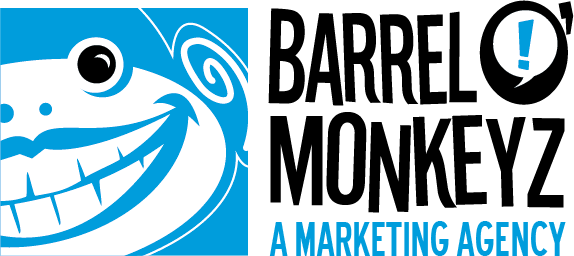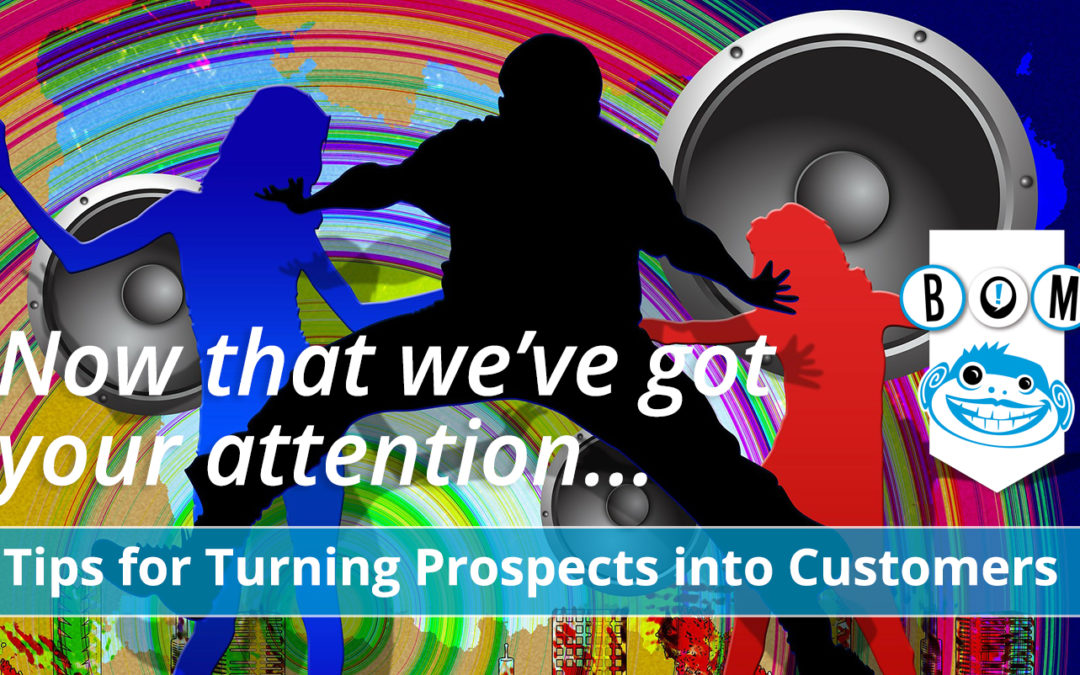Companies spend a lot of time and money to get just the right look for their logo, website, and sales materials. The thinking is that by picking the right graphic, color, or design, you’ll capture the attention of your target customers and they’ll be unable to look away.
If only it were that easy.
It’s one thing to capture attention. It’s quite another to keep it and then convert a target customer (prospect) into an actual customer.
THE BAND’S ALL HERE
Think of sales and marketing communications as you would a band of individual players trying to connect with an audience. With the smash of a drum, the strum of a power cord on guitar, or the wail of a saxophone, any one of them could grab your attention and not even need to be particularly good at what they’re doing (trust me, as the parent of three little ones under five, I know how easy it is for one of them to get my attention through noise!). The trick, of course, is being able to grab attention (think the opening salvo of The Beatles’ “Twist and Shout” or Led Zepplin’s “Immigrant Song”) and then keep it, selling the listener on the song by way of the lyrics, the music, and the beat.
Marketing communications work a lot like that. A graphic, logo, image, or headline can grab attention, but it’s the underlying content either in the form of a video, audio, or the good old written word that needs to convince prospects that what you’re selling is what they need.
KNOW YOUR CUSTOMER
To create content that converts attention into sales, you need to have an understanding of your target customer, whether you are selling business-to-business (B2B) or business-to-consumer (B2C).
- Who are they?
- What do they need from you?
- What are their pain points?
- What are their likes and dislikes?
- Where do they go to consume information?
- How do they make their buying decisions?
- What kinds of words, language, visuals do they react to best?
If you don’t know the answers to these questions, at a minimum seek feedback from your employees. Being on the frontline, they should have a keen understanding of what makes your clients tick. Better yet, ask your customers. Everyone likes to givean opinion, and customers generally feel flattered when you ask their opinions on such matters.
One way to do this is to send email surveys out to your customers and simply ask them who they are, why they use your products/services, and more. Services such as surveymonkey.com and jotform.com make surveying and data collection relatively easy for little or not cost (depending on how big your email list is).
Alternately, especially if you’re primarily a bricks and mortar sort of establishment, you can have staff ask customers to fill out short surveys when they are on the premises to help you get at the data you want.
Similarly, if you operate primarily in the B2B space, use online tools such as those above or deploy written surveys to survey your business clients. Content may be king, but knowledge is power.
IT’S ABOUT THEM, NOT YOU
When you visit most websites (especially in the professional services space, I find), you’re bound to find home pages and landing pages filled with content about how a company or solo professional is the best, most qualified, biggest, most efficient, etc., etc., at doing whatever it is that company or individual does or sells. It’s all mostly a list of features.
What’s missing in the equation are the customers.
- What are their pain points?
- Why are they looking at you as the solution vs. someone else?
The next thing that’s missing is the benefit to prospects of picking you vs. picking one of your competitors. Focusing on the benefits is essential if you wish to convert grabbing someone’s attention into actual sales. In other words, show prospects the benefits of using your products or services so they simply can’t resist becoming your customers.
SPEAK THEIR LANGUAGE
When you know your target customers, what they want/need from you, and how they prefer to consume information, then speaking your customer’s language is easy. What you write in a blog or article, or speak in an audio or video message, should be less about how you want to come across and more about the style of language and tone your target customers expect.
- Do you go with formal, scientific, or conversational language?
- Is lengthy prose or speech better, or do rapid-fire sound bites rule?
- Do you use your own nomenclature or do you stick with words customers are likely to use? While there can be benefits to coming up with your own terminology to distinguish yourself from competitors—much like how Starbucks all but forces its customers to order coffee using its own words—most brands benefit from using words their customers know and are comfortable with. In other words, keep it simple. If it’s a duck, call it a duck.
Again, it’s all about who your target customers are and knowing them well. One way to make it easier to speaker to your customer is to create an actual persona (or personas) of your typical customers. That way, when writing or speaking to your target “customer,” you can hold an image of that individual in your mind’s eye.
MAKE A CALL TO ACTION
Too often, marketers will grab the attention of prospects, make a sales pitch, and then . . . nothing. They fail to seal the deal by not asking the prospect to do something, anything. I’m not talking about click-bait. I’m talking about a simple request to do something as a result of the prospect having visited your home page, landing page, watched a video, listened to a podcast, picked up a piece of sales literature, etc.
What do you want him or her to do:
- Subscribe to your newsletter?
- Download a white paper or how-to booklet?
- Sign up for a class?
- Buy a product?
- Start using your service?
- All of the above?
Just as you typically don’t ask for someone’s hand in marriage on the first date, you don’t have to ask for the final sale from the outset—but you do need to ask for something. Doing so and having the prospect take action creates an important initial connection that can reap greater rewards down the road.
CONVERT MORE CUSTOMERS WITH BOM
Barrel O’Monkeyz has years of experience working with companies to develop and refine their traditional marketing and digital marketing strategies as they ramp up sales, launch new products, and position or re-position their brands. Contact us today to explore how we can build strategies and content to help you start converting more of your prospects into customers.

